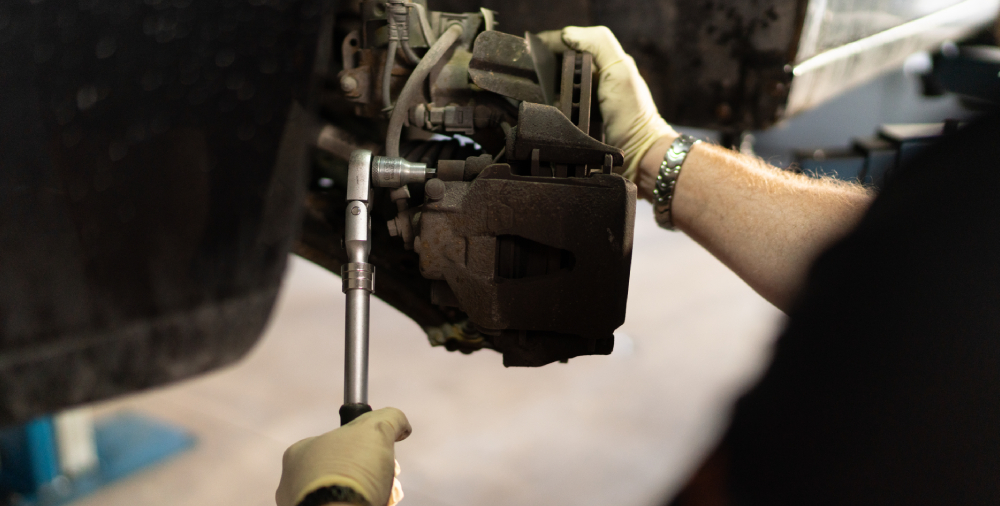Nothing is more important for vehicle safety than proper tires and brakes. This includes timely replacement of brake pads and rotors. As a courteous reminder, you should replace brake pads every 10,000 to 20,000 miles and rotors every 50,000 to 70,000 miles.
However, a proper brake system can include upgrading it. One of the more popular and modern upgrades is swapping drum brakes with rear discs. While this is an involved process, it will significantly improve your vehicle’s braking. And when you’re considering beneficial modifications to your vehicle, upgrading brakes can be a no-brainer.
In this article, we will discuss brake systems, explain disk brakes, and the benefits of upgrading your disc brakes.
Basics of the Brake System
Before diving into disc brakes and their benefits, let’s first review the braking system basics.
You may recall that the hydraulic pressure system starts with the mechanical force of your foot pushing the brake pedal. From there, a piston squeezes brake fluid into a cylinder that generates more force than your foot and pedal. The brake fluid then helps to transfer pressure through the brake lines and brake hose that connect to each wheel. Finally, brake fiction against the disc or drum from the wheel cylinders slowly stops the tire. Thus, giving you a safe stop when everything is functioning.
What Are Vehicle Disc Brakes?
Disc brakes have become the more common brake type in vehicles today, especially for the front axle. Some will have the rear axle equipped with disc brakes, but others won’t. That’s where the biggest upgrade for disc brakes is: swapping out drum brakes for disc brakes on the rear axle.
The disc brake system primarily includes the rotor, brake pads, and a caliper assembly. The caliper frames the rotor and functions as a c-clamp. Additionally, rotors can be solid or vented, and the vented rotor has a greater surface area and dissipates heat easily. And there can be two types of calipers: a floating caliper and a fixed caliper.
Vehicle Drum Brakes vs. Disc Brakes
Drum brakes are an older brake style, and they’re only used on the rear axle. Drum brakes use a wheel cylinder with pistons instead of a caliper to clamp brake pads against the rotor. This also means that drum brakes don’t use brake pads.
Why Choose Disc Brakes?
As disc brakes have grown more popular, it has become clear they are more efficient. They are less complex, dissipate heat more quickly and easily, and have better-stopping power. Plus, disc brakes even work better in wet conditions, which can be the biggest cause of a braking accident.
Your vehicle likely has disc brakes for both axles, but there is a chance the rear axle still has drum brakes. This is done to keep costs down during manufacturing, but now that the vehicle is yours you can make the choice to upgrade. Disc brakes are more durable, self-cleaning, lighter, and more powerful.
Other Brake Upgrades
There are other brake upgrades you can have. Of course, it’s best to check with automotive experts before modifying your car. The experts at Loper’s Performance Center are always happy to help decide what’s best to enhance your vehicle. You can change the type of rotor (drilled or slotted), upgrade to performance brake pads, and more. On top of upgrading to disc brakes, you can continuously tweak and modify your vehicle for optimal performance. And gearheads, like us, know that’s the best part.
Upgrade Your Vehicle – Contact Us
Loper’s Performance Center is the largest speed shop in Arizona. We have the service and parts to improve your vehicle. Contact us for a free quote to get your vehicle to where it should be.
About Loper’s Performance Center
We’ve been a shop you can trust since 1967. Loper’s Performance Center offers performance parts and a service center, unlike most automotive shops. Additionally, we’re frequently blogging to offer automotive advice and insight. Learn about dyno tuning, how to prolong your car, and more.

